The Secret to Wow! in the Garden
With lessons from the Chelsea Flower Show
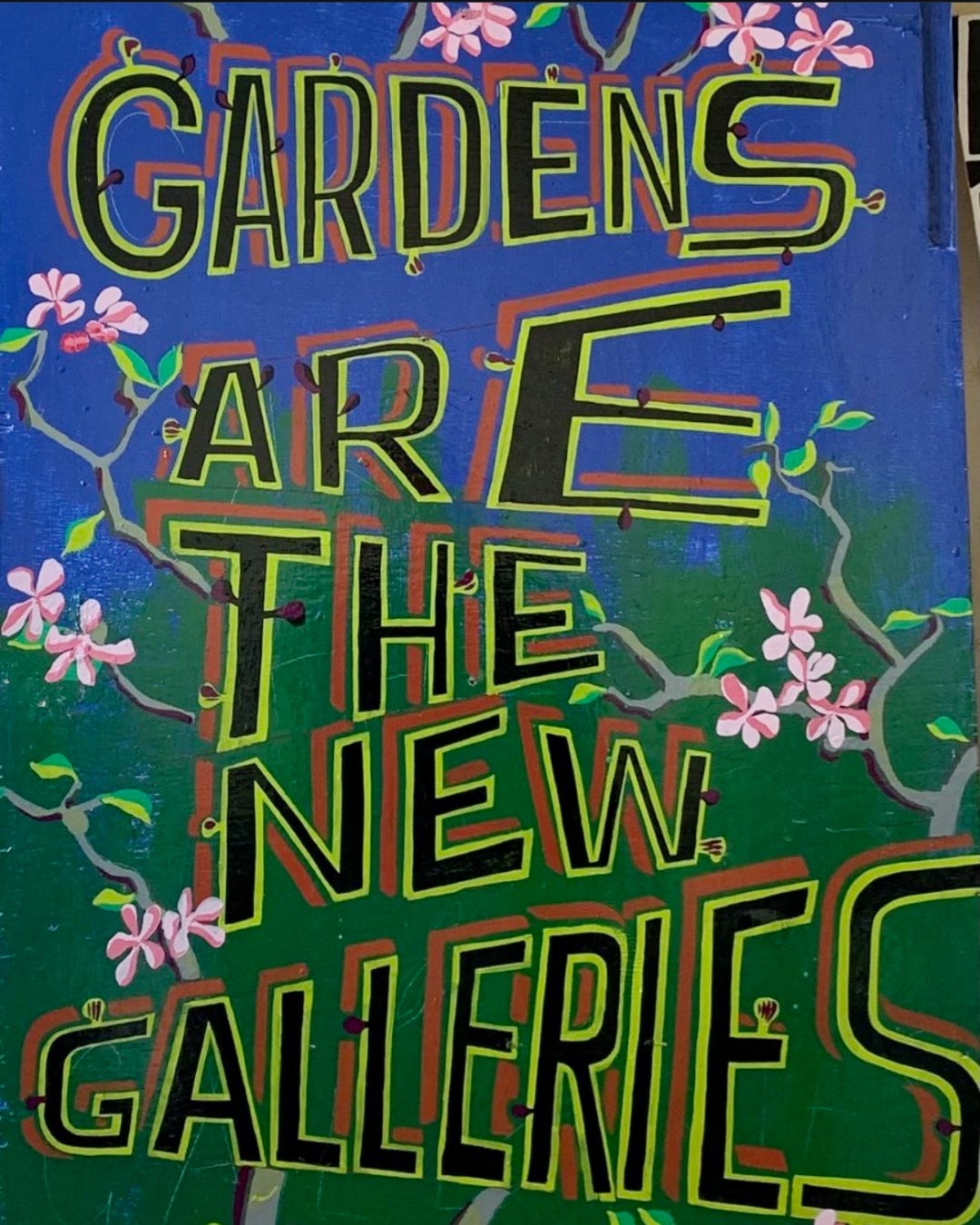
Dear Heather, Is it okay to mix Blooming Romantic and California Dreamin’ in my balcony garden? — Eva, Orange County, CA
Yes, but very carefully, for example by finding an image of one successful garden that has the elements you want in yours from the two Yardenalities.
Picking a little of this and a little of that from various sources of inspiration is the very definition of “pastiche,” a generally derogatory term that also means “hodgepodge.”
Pastiche (noun)
literary, musical, or artistic piece consisting wholly or chiefly of motifs or techniques borrowed from one or more sources.
an incongruous combination of materials, forms, motifs, etc., taken from different sources; hodgepodge. — dictionary.com
I’m personally struggling with the urge to include everything I love in a new design project. I have researched one concept after another, renaming my Pinterest board each time I cast off a theme and delve into the next, settling eventually on My Bloomsbury Cottage. Unfortunately, the book Bloomsbury Rooms revealed the style of Bloomsbury group was all over the place, so I’m selecting decision rules from what I like from the homes and aesthetic philosophies of Virginia Woolf, her sister Vanessa Bell, and Sissinghurst creator Vita Sackville-West — printed fabrics, hand painted finishes, animal and plant imagery, unfussy furniture with interesting forms, and — above all — comfort, which is uncomfortable for me.
Tricky even for experts
At Chelsea Flower Show 2025 in London, which has dominated my news feed recently, esteemed garden designer Tom Hoblyn attempted to combine both Mediterranean and English influences. Aiming to maximize the sensory experience for residents at Hospice UK, Hoblyn created a plant palette with both fragrant gnarly pines typical of the Greek islands and bright colors typical of English gardens. The hardscaping includes boulders, cast-stone bowls, and vibrant red and oche washed walls inspired by Majorca, as well as sinuous benches inspired by the boat-building tradition of Durham, England, where the hospice is located. Unfortunately, Hoblyn himself admitted in a lecture at the Garden Museum that the result was not entirely successful:
I didn’t want it to be a pastiche of a Mediterranean garden; I wanted it to be an English garden inspired by the Mediterranean garden. It’s a tricky one that – and I think the judges found it tricky as well. — Tom Hoblyn, Garden Museum’s Chelsea Lecture
Focused inspiration engenders creativity
Fellow silver-medal winner Nigel Dunnett’s narrowly focused concept was — paradoxically — more exciting. To create a garden and studio space for an artists’ residence in coastal Scotland, he leaned into the purpose and the location, creating unique sculptural elements that echoed the nearby sand dunes.
I deliberately didn’t want to try … to create a little piece of Scottish countryside or coast in Chelsea. … It’s really a starting point. It’s a jumping off point for doing something that’s inspired, but it’s not a copy. — Nigel Dunnett, Garden Museum’s Chelsea Lecture
For his plant palette, Dunnett used a single image of the Scottish dunes as a touchstone, deriving from it a series of selection rules, like “mounded and rounded,” “vertical contrasts,” and “feeling of space in the planting — not densely packed.” Even the studio “bothy” — a Scottish word for hut — was from a Scottish firm and the show inside it features work by the author and artist Bob and Roberta Smith on “Gardens Are the New Galleries.”
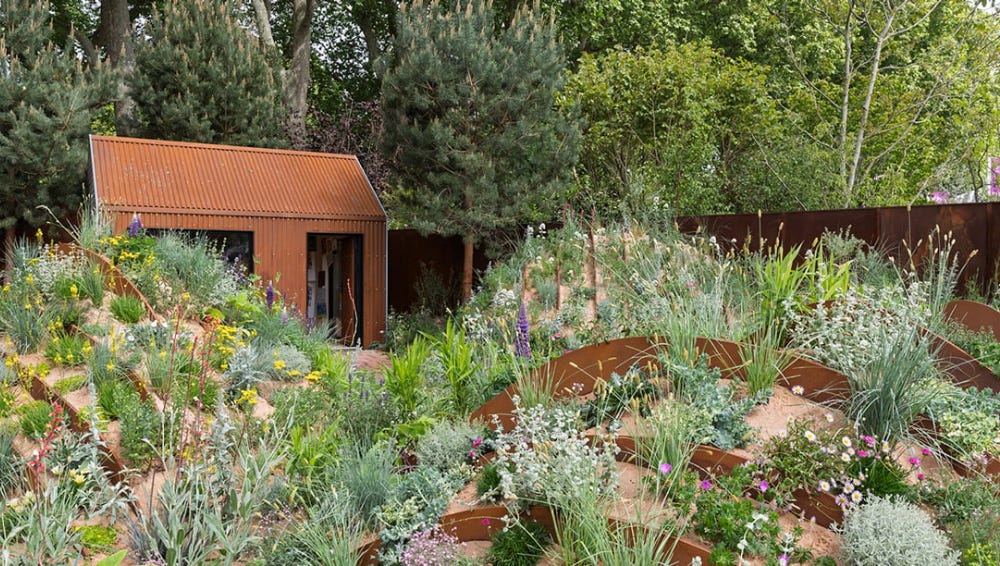
Excluding passions can be wrenching but worth it
I recommend erring on the side of unity, of cohesion, in your garden design. In our Design Your Yard workshop, Zoe and I talk about balancing repetition and surprise. Repetition is the most important tool in creating this sense of unity — repeating shapes, colors, specific plants, and hardscaping materials throughout the garden. You can always add surprises later, but it’s difficult — if not impossible — to impose unity on disparate elements.
— Heather
P.S. How to Photograph Gardens author Jason Ingram will join Zoe and me on July 19 for our next live webinar for paying subscribers ($30/year). If you’re interested in joining, please help us choose the best time.
10 Weekends to Wild Challenge #8: Move plants around
First, congratulations to all of you strolling your yards daily! You made up 88% of our poll respondents. I’m guessing these rosy results reflect nonresponse bias, but I’m thrilled so many of you have developed this restorative practice. Bravo!
This week’s challenge is to move some plants within your yard — and tell me about it in the comments.
Native plants, unlike highly bred hybrids, seed around or spread by rhizomes or stolons. You can dig up and move these offspring to fill in other areas of your yard (or give to friends). This saves money and eliminates plastic and other resources used in nursery propagation. Rushing to take advantage of Rhode Island’s spring rains, Pete and I have moved dozens of our most prolific perennials to our new meadow — especially, woodland sunflowers (Helianthus divaricatus), broad leaf mountain mint (Pycnanthemum muticum), blue vervain (Verbena hastata), and wild bergamot (Monarda fistulosa). (Note: Perennials with tap roots, like baptisia and butterfly weed, may not transplant well.)
Another reason to move plants is because they are just not working for you or the conditions are not working for them. Pete and I moved a smooth hydrangea (Hydrangea arborescens ‘Haas Halo’) that was languishing in deep shade to a sunnier spot.
ICYMI
Challenge #1: Check your winter views
Challenge #2: Score some seating
Challenge #3: Name your theme
Challenge #4: Get thee to a nursery!
Challenge #5 & 7: A daily stroll
Challenge #6: Note what’s blooming
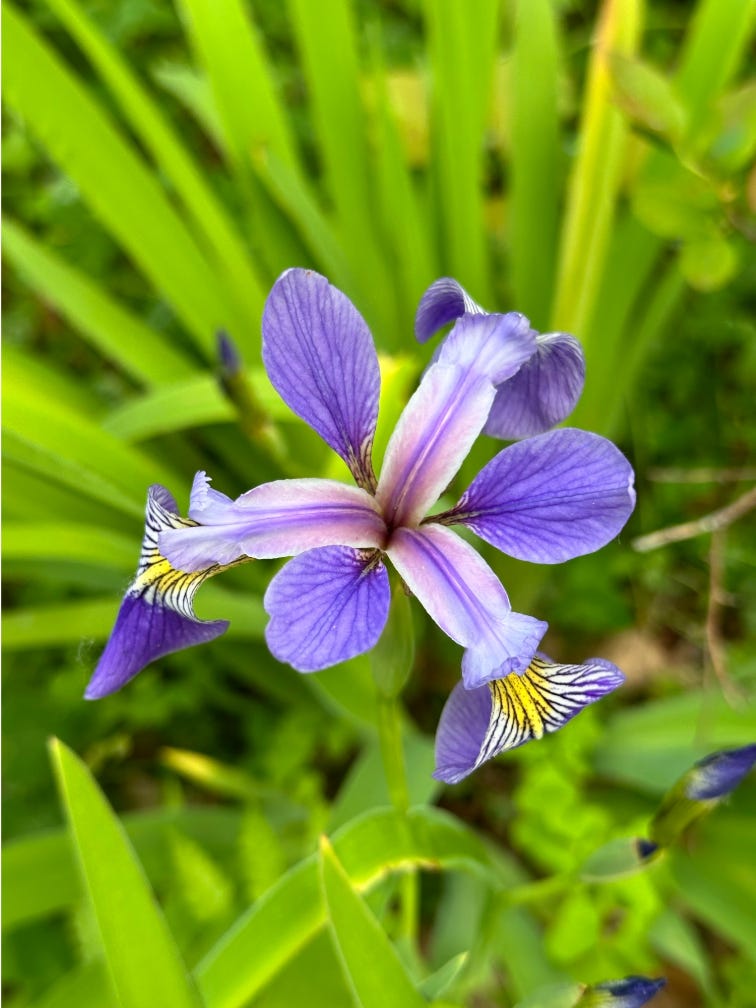
Why, How, Wow!
Why? Color wows, green heals
There’s actually data behind the urge to add flowers to less floristic Yardenalities like California Dreamin’ and Courtyard Chic: A well-designed study of 1,411 participants at 31 sites in England found gardens with at least 27% flower cover were considered significantly more attractive than those with less flower cover. Authors Helen Hoyle, James Hitchmough, and Anna Jorgensen dubbed colorful flowers the “wow factor.”
Although seen as most attractive, brightly-colored, flower-filled landscapes were perceived as less restorative than subtle, green landscapes.
According to interviewees, ‘attractive’ planting was often more vibrant and colourful, had more detail, and demanded attention. In contrast, when choosing areas of planting they thought would be more relaxing to walk through, most interviewees chose predominantly green planting. Interviewees saw this as less detailed, providing the ‘background’ for other thoughts or conversations. — Landscape and Urban Planning
This was in a UK context, but 27% or more flower cover seems to me a reasonable guideline for flower displays like meadow gardens or what the Brits call herbaceous borders. My purple par terre, which I designed to shine mid-summer, is far below the 27% threshold in early June and — despite the gorgeous false indigo, blue flag irises, and wild lupine — is unimpressive. I’m planning to seed more lupines, divide irises, and plant June-flowering bluestar to increase its flower cover in late spring.
Another takeaway from this study is the value of mostly-green areas — paths, rooms, destinations — for calming and relaxation. Many larger yards have woodlands that serve this function. In my average-size yard, the blackhaw allee and shady midnight garden are both such green, restorative areas.
In fact, the calming value of uncolorful green gardens is what makes Japanese-style gardens like Kazuyaki Ishihara’s gold medal winning Cha No Niwa — Japanese Tea Garden so, well, zen. And it’s why the Courtyard Chic Yardenality — dominated by bigleaf evergreens — is the historic style of city gardens. Courtyard Chic creates a calming, evergreen oasis in an urban context, where space is limited and relaxation may be more needed than excitement.
How: Sustainable inspiration from the top
All the “Show Gardens” (i.e., large gardens) at Chelsea employed the sort of dense planting that I feature in this newsletter — not a mulch bed in sight. And they illustrated sustainable practices, from Dunnett’s use of wood rather than steel in his sculptural dunes to the AI tool to improve urban tree success rates in Tom Massey and Je Ahn’s gold medal winning Avanade Intelligent Garden.
Although I ranted about their colonial impact in Why I Resent English Gardening, the Brits are way ahead of the U.S. when it comes to gardening in general and sustainable practices specifically. I imagine some credit goes to the current monarch, who has been advocating sustainable practices for decades. I got the impression — and English readers, please correct me if I’m wrong — Charles’s love of chickens and organic gardening was once dismissed as an eccentricity akin to Louis XVI’s watch-making. But now he’s king and sustainability is chic.
Here are some of the many ways King Charles’s Highgrove Gardens are managed sustainably:
The interlinked series of gardens covers 15 acres in total, all of which are managed organically.
Natural enemies of insect pests are introduced as part of a natural pest control programme that does not require the use of harmful chemical insecticides. …
A specially-built reed bed sewage system, much loved by dragonflies at its treatment end, is used for all Highgrove’s waste.
Gutter rainwater drains into tanks and is used in the toilets in the Orchard Room. Rainwater is also used to irrigate the garden.
The gardeners make their own compost and leaf mould.
A willow ‘ramp’ is placed in water features to provide an easy exit, should wildlife inadvertently fall in. …
Two fountains in the gardens provide running, open water for birds throughout the year. — Highgrove Gardens

Wow! Strong beauty celebrates women overcoming
Fellow Substacker Jo Thompson’s Glasshouse Garden won a gold medal for the most boldly floristic show garden. Designed for women inmates enrolled in a horticultural program,
The Glasshouse Garden celebrates the transformative effect of second chances through horticulture. … Jewel-like colours and fragrant flowers sway to the sound of water from a narrow rill which winds its way through the space connecting different areas and ending in a tranquil pool.
The planting is rich and full of texture and includes beautiful river birch trees, ferns, grasses and roses including, Rosa ‘Tuscany Superb’, Rosa ‘Charles de Mills’, and Rosa ‘Emma Bridgewater’. The planting colours are inspired by the notion of ‘strong beauty’ in a palette of deep reds and muted pinks. — Royal Horticultural Society
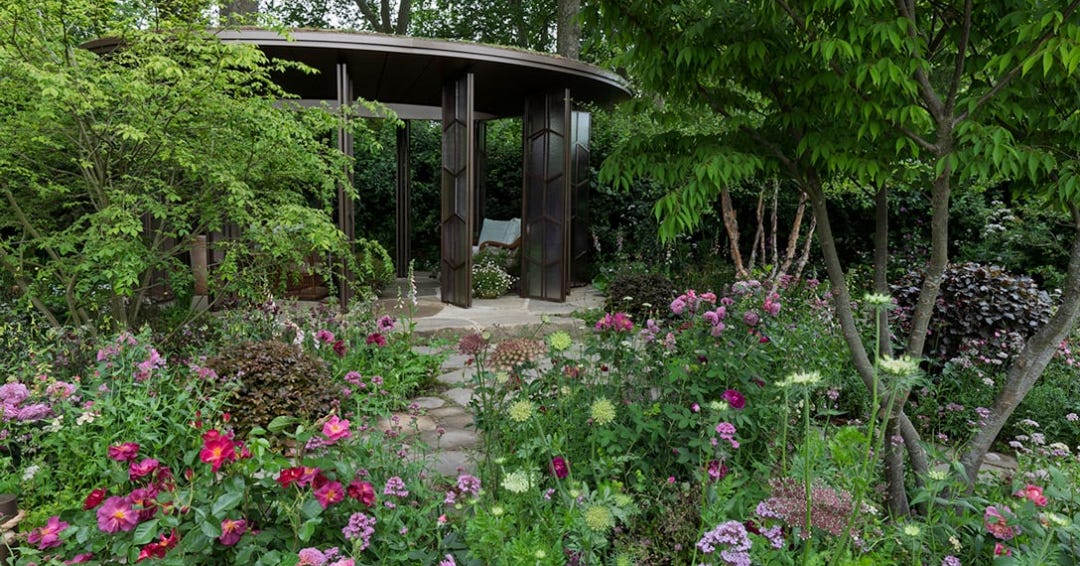
One More Thing…
Have native perennials that tend to flop later in the season? It’s time to give them the Chelsea chop.
“Spend money on trees and you get it back triple,” according to Warren Buffett colleague and fellow billionaire Charlie Munger. For research to back it up, see How Does Landscaping Affect Your Home's Value?
The New York Times recently reported on how a dot pattern on the windows made the deadliest known building safe for birds.
If you’re going to be in Washington D.C. between now and November, make sure to catch the Little Beasts show at the National Gallery.
To support my work, please share this newsletter with a friend, become a paying subscriber, or encourage me with a like or comment. I love hearing from you!



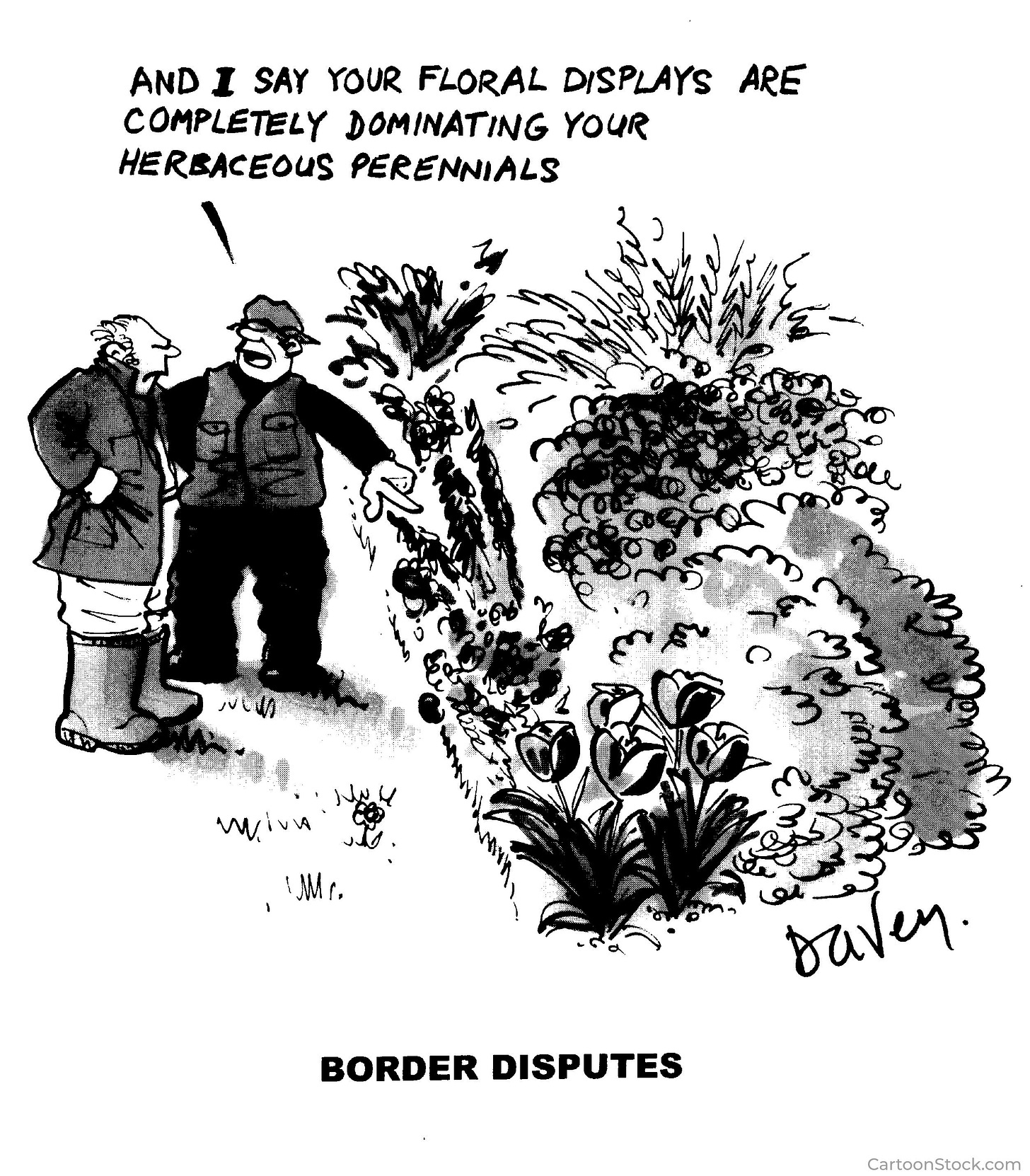
What is a mulch bed? Are they the reason some people deplore the beneficial use of mulches?